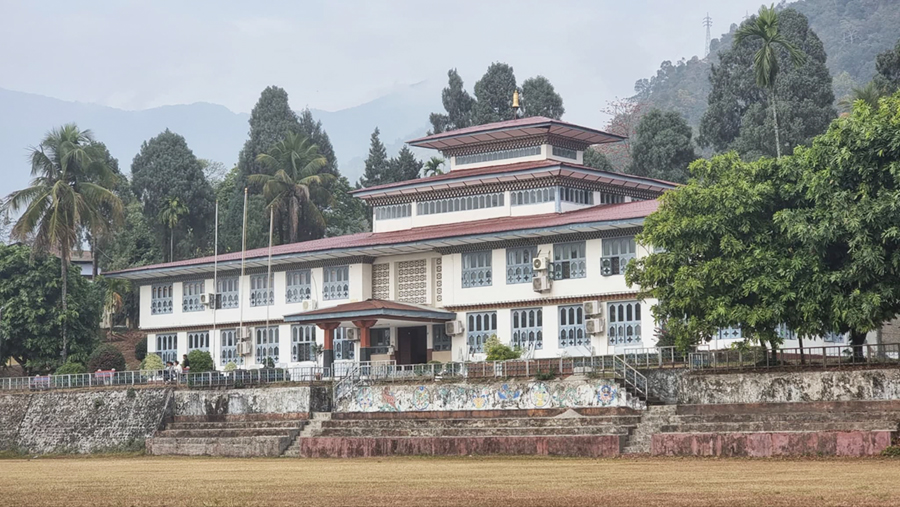
To address the shortage of school counsellors in secondary schools, the Samtse College of Education has doubled its intake of students for the Postgraduate Diploma in Contemplative Counselling Psychology. The number of intakes has been increased from 11 to 30 students. The Career Education and Counselling Division under the Ministry of Education and Skills Development is hoping that this increase will help meet the demand for counsellors in the coming years.
Promoting mental health in schools has become crucial according to school counsellors. Many students now face mental health issues that impact them academically, socially and emotionally. However, addressing this problem is difficult without enough counsellors.
Currently, the country has a shortage of 17 counsellors in secondary schools. Primary schools do not have counsellors as the staff allocation only includes them for secondary schools.
At Jungshina Primary School, students receive counselling from the school’s well-being team. However, according to the principal, it is challenging without a full-time counsellor as the school lacks dedicated counselling services.
According to the Career Education and Counselling Division, the well-being team in the primary school is being trained in basic helping skills to handle minor cases and refer students to nearby professionals when needed.
“Those teachers counsellors they got training for a few days or a few weeks and they are coordinating all this counselling program. But frankly speaking, the teacher’s job priority should be given to the teaching only and we are only able to attend to students only when there are substantial challenges. But if we have the regular counsellor, they can plan annually, they can have the situation analysis, then after that they can act and they can provide the support to students, staff, teachers, and the community at large,” said Sangay Tenzin, principal at Jungshina Primary School.
Meanwhile, some secondary school counsellors told BBS that having additional school counsellors, preferably one male and one female would be beneficial. This would address gender-specific issues and allow them to reach more students effectively.
“Being a lone counsellor to 1,000 students is quite challenging. If we have a male and a female counsellor, it will benefit us greatly. A few female students initially hesitated to come to me. Likewise, I feel some male students feel more comfortable with a female counsellor. So it would be more convenient to have at least a male and a female counsellor in schools with many students,” said Karma Tenzin, school counsellor at Zilukha Middle Secondary School.
“Firstly, as a lone counsellor, if it is a big school, the counsellor has to reach out to every student. So it becomes a burnout session for the counsellor. In my case, I’m taking up classes from 7 to 10 and I feel the junior students, especially class 4 to 6 students are being left out. Having an additional counsellor in my school, I think it’s going to help me work with that counsellor in my professional and personal growth as well,’’ said Yangchen Lhamo, School Counsellor, Changzamtog Higher Secondary School.
A few counsellors said that it is challenging to manage all the cases on their own, especially when they also need to deal with clients who require urgent help.
However, these issues will be addressed with the increased intake at Samtse College Education. The deputy chief of the Career Education and Counselling Division said that their goal is to ensure there are enough counsellors in both primary and secondary schools in the long run.
For the last three years, the college accepted only 11 students annually.
‘‘For the short-term program, especially to the primary schools, we have established a well-being team. And these are the sort of short-term strategies to ease the issues, especially in primary schools. And, in the long run, every school will have a counsellor. And especially in secondary schools, we are even planning to recruit one male and one female counsellor to balance the gender,’’ said Jampel Tenzin, deputy chief counsellor at Career Education and Counselling Division, MoESD.
In many developed countries, there’s a set ratio of students to counsellors. For example, the American School Counsellor Association in the US recommends one counsellor for every 250 students.
Currently, the country has nearly 160 full-fledged school counsellors.
Sonam Yuden
Edited by Sonam Pem







